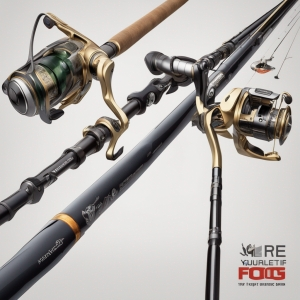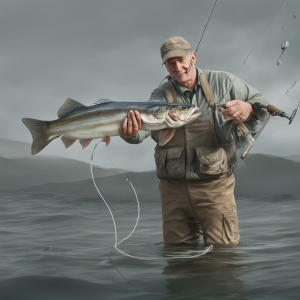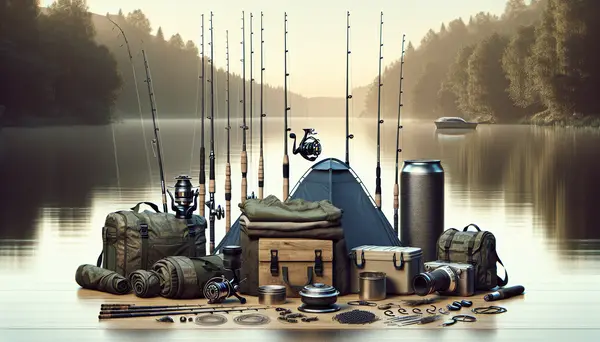Table of Contents:
Introduction to Fishing Brands
When taking the first steps into the world of fishing, it can feel like navigating a maze. This is especially true when it comes to understanding and choosing among numerous fishing brands available. In this article, we aim to simplify this journey and guide you towards finding your ideal fishing gear. We will explore some of the leading brands in the market, their unique selling points, and how to determine which one fits your fishing needs and style the best.
Selecting the Right Fishing Gear
Selecting the appropriate fishing gear is not merely about picking the most renowned brand. It's about understanding your individual requirements and how a specific brand can meet them. The right fishing brand for you may vary based on various factors like the kind of fishing you plan to do (freshwater, saltwater, fly fishing, etc.), your experience level, and your budget.
To make an informed decision, it's important to do your research. Or better yet, try out gear from different brands if possible. This hands-on experience can better illustrate the quality, comfort, and usability of the gear and help you make a choice. Remember, the goal isn't to find the best brand - it's to find the brand that's best for you.
Comparison of Fishing Gear Brands
| Brand | Pros | Cons |
|---|---|---|
| Brand A |
|
|
| Brand B |
|
|
| Brand C |
|
|
Understanding Fishing Rods

One of the key pieces of fishing equipment is the rod. The right rod for you is not necessarily the one that is highest-rated or most expensive. Instead, it’s dependent upon the fish you are angling for, the bait you are using, and your distinct technique. Various fishing brands design rods with specific situations in mind, so it’s crucial to find one that aligns with your needs.
The first factor comes down to the skill level. A beginner might prefer an all-round rod that's easy to handle, while an experienced fisherman may seek a specific rod for certain conditions or fishing styles. Different fishing brands offer a wide range in rod lengths and materials, such as fiberglass or graphite, each with their unique feel and castability that you should consider before making a purchase.
Thankfully, most fishing brands have comprehensive guides to the rods they sell. These guides can provide invaluable information on factors like rod weight, rod length, and rod material. So be sure to make good use of this information when deciding which brand fits your fishing style the best.
Choosing the Ideal Fishing Reel
The fishing reel, the counterpart to your rod, is an equally defining component of your fishing gear. Just as with the rod, the ideal reel depends upon your fishing style and the type of game you're pursing. Are you dabbling in fly fishing, trolling, or bottom fishing? Such specific needs will narrow down your fishing brand choices as not all manufacture certain types of reels.
Leading fishing brands usually offer an array of reels like fly reels, spinning reels, and baitcasting reels. Each reel type is designed for a specific fishing scenario and has its own advantages. Having a clear understanding of these reel types and their respective usages can dramatically improve your fishing performance.
In addition to this, reel construction and durability are also important factors to consider. Reels made of materials like aluminum or stainless steel are typically more durable and corrosion-resistant than their plastic counterparts.
As a rule, don't shy away from asking other anglers for their experiences with different brands or even going to a fishing store to try how the reels feel in your hands. It will be your companion in the open waters - so choose wisely!
Fishing Line: the Lifeline between You and Your Catch

A crucial yet often overlooked aspect of fishing gear is the fishing line. Providing the vital link between you and your catch, the line's selection depends upon your desired catch, the environment, and the fishing technique. The right fishing line can make a world of difference in your success rate.
There are three main types of fishing lines: monofilament, fluorocarbon, and braided. Each type has unique characteristics that make it attractive for certain fishing scenarios and styles. Monofilament is the most common type, offering a good blend of strength, abrasion resistance, and cost-effectiveness. Fluorocarbon lines are invisible underwater and are quite durable, making them an excellent choice for clearwater fishing. Braided lines, while more expensive, deliver a superior strength-to-diameter ratio and are perfect for casting long distances.
Reputable fishing brands produce a wide array of lines to suit different needs. Some focus on maximum strength, others prioritize low visibility, while some aim for high sensitivity. As an angler, it's up to you to decide which qualities you prioritize in a line, and hence, which brand is your best match.
In the quest for the perfect line, don’t underestimate the importance of line maintenance. Line damage can lead to unexpected breakages and the loss of your catch. So, no matter which brand you choose, ensure it offers good quality lines that are durable, have low memory, and retain their strength even after prolonged use.
Bait and Lures: Attracting the Fish
In the world of fishing, not all brands are created equal, especially when it comes to bait and lures. This crucial component of your gear plays a significant role in attracting fish and getting them to bite. However, the choice of your bait or lures largely depends on the species you're targeting, the current conditions, and your personal fishing style.
Types of bait can range from live bait, such as worms and minnows, to artificial lures, that mimic various prey. Live bait is often preferred by those aiming for a natural appeal. Artificial lures, on the other hand, offer a wide range of shapes, colors, and designs for different situations, and are an easy-to-maintain alternative to live bait.
When it comes to fishing brands, top ones like Rapala, Yo-Zuri, and Berkley have a broad variety of lures to attract different species of fish in diverse environments. Some brands specialize in producing life-like lures while others focus on innovation, offering lures with unique features like sound technology, or glow-in-the-dark capabilities.
Choosing the right bait or lure is an art in itself and requires practice and experience. Try experimenting with different brands and types to see what works best for you. Remember, the key is to 'match the hatch', i.e., pick a lure that closely resembles the natural food sources of the fish you're aiming for. And as always, local knowledge and advice from fellow anglers can be invaluable.
Hooks: Size and Shape Matters

Of equal importance to rods, reels, and lines in your fishing gear set are your hooks. They are small, easily overlooked, but of utmost importance. The shape and size of your hooks can make a significant difference to your fishing success.
Generally, fishing hooks come in a variety of sizes and designs based on the species and size of fish you are targeting. The larger the fish you aim to catch, the larger the hook size you'll need. Some types of hooks include single hooks, bait hooks, treble hooks, and jig hooks, each catering to a different fishing scenario.
Furthermore, some brands specialize in manufacturing hooks made from durable materials like high-carbon steel or vanadium, often coating their hooks for corrosion resistance. Such features are worth considering, especially if you plan to fish in saltwater environments.
Whether you choose a fishing brand known for strong, sharp hooks, or one that offers a more balanced overall fishing gear set, always remember - even the sturdiest rod and the smoothest reel cannot make up for a poor-quality hook. Your choice of hook plays a vital role in whether you reel in your catch or tell tales about the one that got away.
Bringing it All Together
Having touched upon the importance of various elements of your fishing gear, let's circle back to our original question - how do you navigate the waters of fishing brands to find your ideal gear? By now, it should be clear that the choice of fishing brands is not simply about popularity. Instead, it's a more personal and multifaceted decision.
It's about understanding your fishing style, the species you plan to catch, where you'll fish, and the type of bait you'll use. All of these factors interplay to determine your perfect match in terms of fishing gear. Remember, different fishing brands specialize in different equipment types and have their respective advantages.
It's highly recommended to experiment with different brands and gear types before settling down with your preferred choice. With time and experience, you'll come to realize which brand resonates with your fishing style the most providing efficiency, comfort, and success in your fishing endeavors.
Conclusion: Finding Your Ideal Gear
To wrap up, it's clear that the process of selecting your fishing gear requires a lot of careful thought and consideration. The wide array of fishing brands and products out there can make this process equally exciting and challenging. Whether it's the rod, reel or fishing line you're selecting, it boils down to finding the brand that best matches your specific requirements.
It's always beneficial to approach the selection process with a clear understanding of your needs and the willingness to do some research. Remember, there's no one-size-fits-all fishing gear. Each brand brings something unique to the table - be it durability, performance, specialization, or value for money - and your job is to find the one that ticks the most boxes for you.
Lastly, seeking personal experiences and reviews from fellow anglers can offer priceless insights. Their experiences might guide you closer to the brand and gear that will accompany you on all your memorable fishing adventures.
Happy hunting for your ideal fishing gear and here's to casting your line into many successful angling experiences!
Frequently Asked Questions about Fishing Gear Brands
What are some of the top fishing gear brands?
Some of the top fishing gear brands include Shimano, Penn, Daiwa, and Abu Garcia.
How to choose the right fishing gear brand for me?
Consider factors like your budget, the type of fishing you do, the brand's reputation, and the specific features of the gear.
Is expensive gear always better?
Not necessarily. While more expensive gear often has higher quality, there are many affordable options that offer great value.
Do I need different gear for different types of fishing?
Yes, different types of fishing require different gear. For example, fly fishing requires specialized gear that differs from what you'd use for saltwater fishing.
What is the most important piece of fishing gear?
The most important piece of fishing gear is generally the rod and reel. These will most directly impact your fishing experience.







